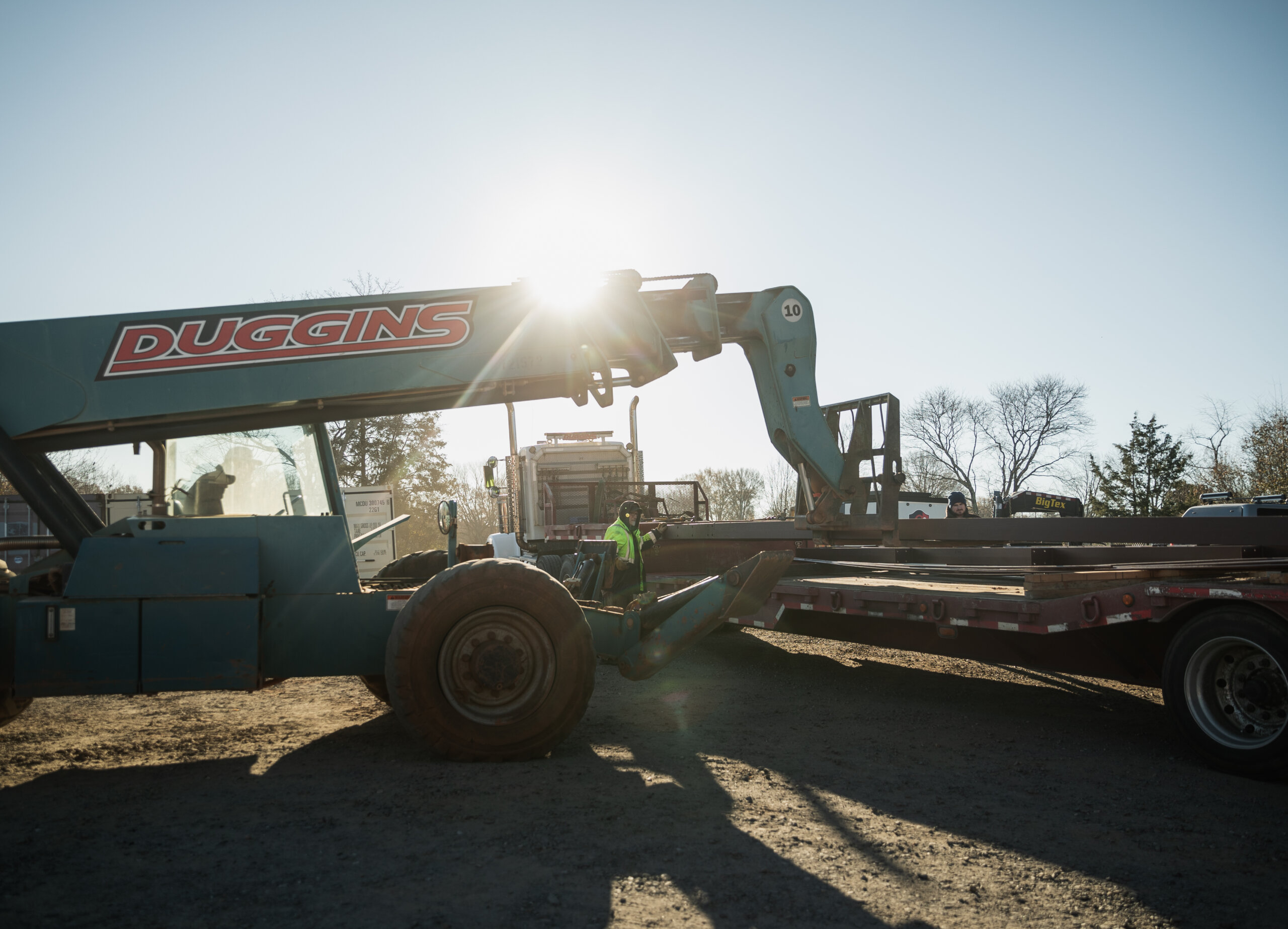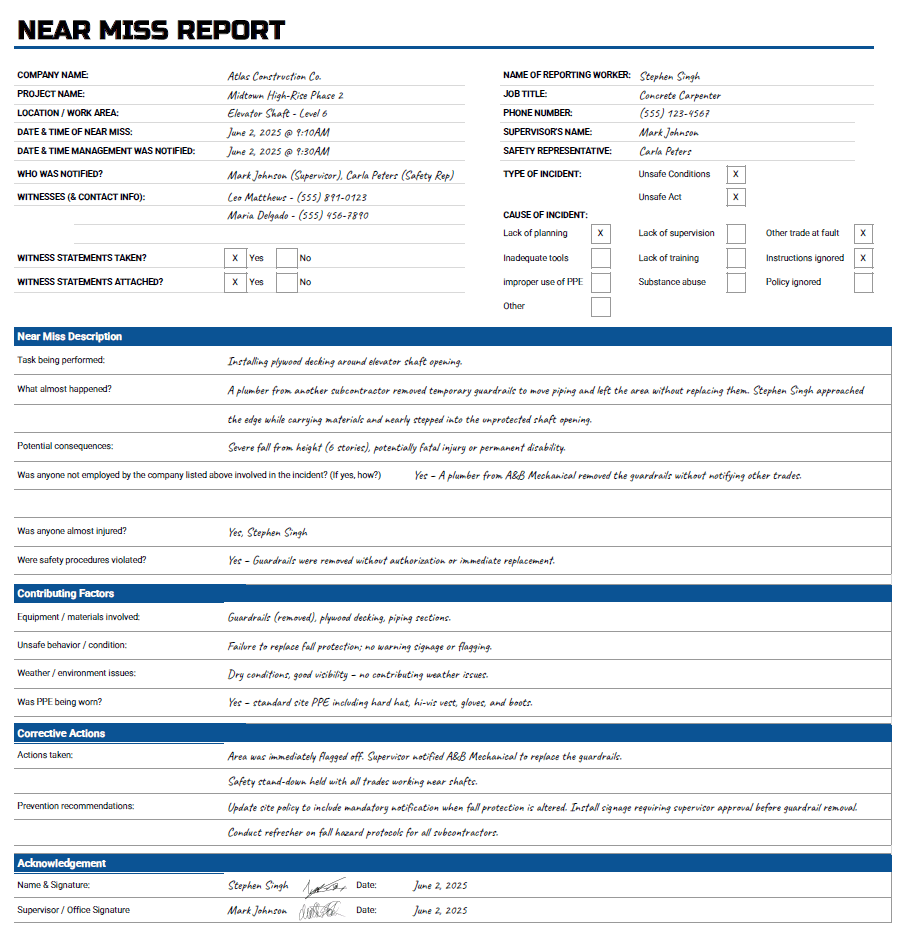On a construction site, not every danger ends in injury. But just because no one gets hurt doesn’t mean you’re in the clear. Near misses are red flags. They are warning signs that something could have gone very wrong. Yet too often, these incidents go unreported, unnoticed, and unresolved.
In this post I’ll break down what near miss reports are, why they’re essential for safety culture and compliance, and how to encourage consistent reporting across your jobsite.
What is a Near Miss?
A near miss is any unplanned event that had the potential to cause injury, illness, or damage. These can include falling objects that narrowly miss a worker, electrical hazards that go unnoticed, or slips that don’t result in a fall.
Just because the outcome wasn’t serious doesn’t mean the risk wasn’t real. Near misses are often precursors to serious incidents. By tracking them, you catch problems early.
Examples of Near Misses:
- A scaffold board shifts underfoot but a worker catches their balance
- A load swings too close to a worker but doesn’t make contact
- A power tool trips a breaker, but no one is injured
- A worker almost steps into an unmarked trench
4 Reasons Why Near Miss Reporting Matters
1. It Prevents Future Accidents: Most serious incidents are preceded by close calls. Capturing and analyzing near misses helps identify recurring hazards and unsafe patterns before someone gets hurt.
2. It Strengthens Your Safety Culture: When workers see that management takes near misses seriously, it sends a message: safety isn’t just about reacting to injuries, it’s about preventing them.
3. It Reduces Liability and Claims: Risk Proactive reporting shows due diligence. If something does go wrong in the future, a well-documented pattern of hazard identification can demonstrate that your company took reasonable steps to protect workers.
4. It Supports COR, ISO, and Other Certifications: Safety programs that emphasize continuous improvement often require or reward near miss reporting. It’s also a best practice cited in audits and third-party safety evaluations.
So if there are really good reasons to report near misses, why is it that workers often don’t report them?
Why Workers Don’t Report Near Misses (and How to Fix It)
Sources suggest that 49% of all workplace injuries go unreported, so it is even more unlikely for workers to report incidents that don’t result in an injury.
One of the biggest reasons is mindset—many workers assume that if no one got hurt, it’s not worth mentioning. They may see it as a close call, not a reportable event. Others fear being blamed or reprimanded, especially if they were directly involved in the situation. Some simply don’t know what qualifies as a near miss or how to report one properly. And even when they do, a complicated or time-consuming reporting process can be enough to discourage them.
Fixing this starts with creating a culture where near miss reporting is expected and encouraged. That means making the process simple, accessible, and judgment-free. Supervisors should model calm, constructive responses to reports and regularly talk about the importance of reporting—even when “nothing happened.” Making the form easy to find and submit (digitally, ideally) also removes a key barrier.
Training plays a critical role. Workers who receive safety reporting training are significantly more likely to speak up. A study by Lloyd’s Register Foundation suggests that those trained within the past two years are over three times more likely to report incidents than those who’ve never had training.
Free Near Miss Report Template
If your company isn’t documenting near misses consistently, start today. We’ve created a free downloadable near miss form that you can print or use digitally. It’s part of our larger incident report package, which also includes:
✅ Accident / Injury Report
✅ Equipment Failure Report
✅ Property Damage Report
✅ Worker Misconduct Report
Final Thoughts
Near misses are the canaries in the coal mine of construction safety. When ignored, they signal bigger problems on the horizon. But when tracked and addressed, they become opportunities to fix issues before someone pays the price.
Make it easy for your crew to speak up. Make it normal to investigate what almost happened.

